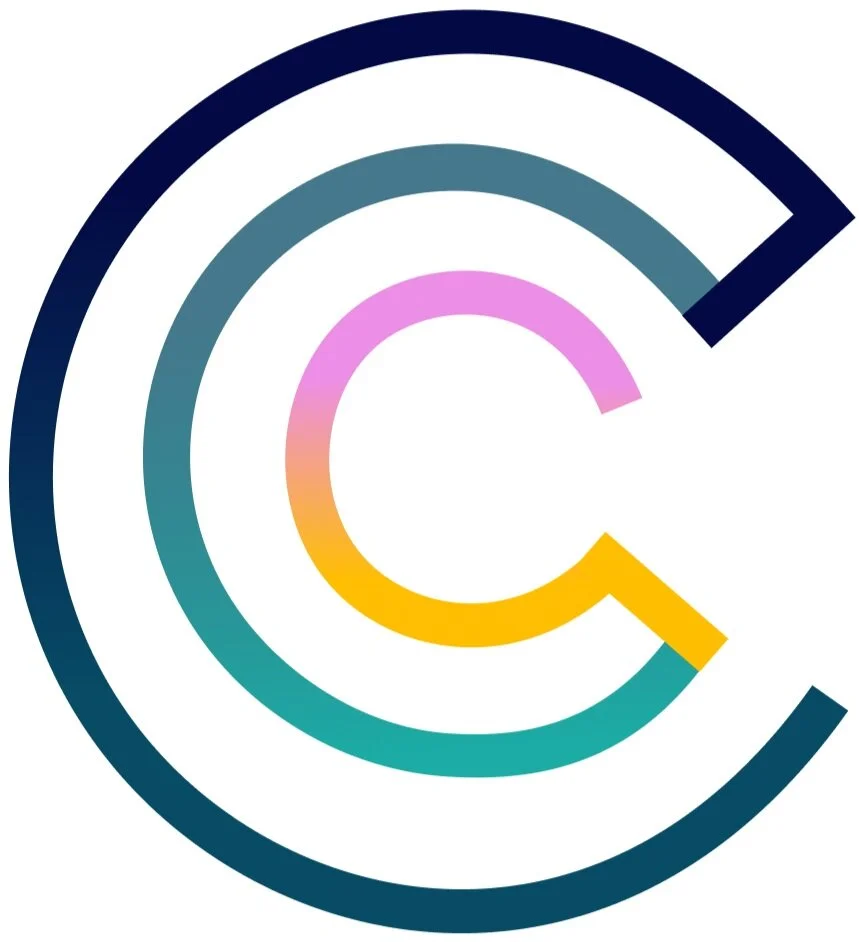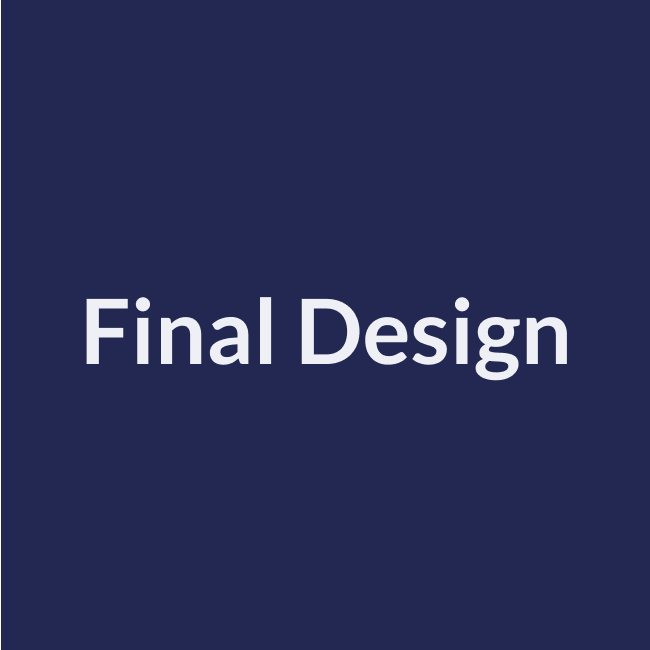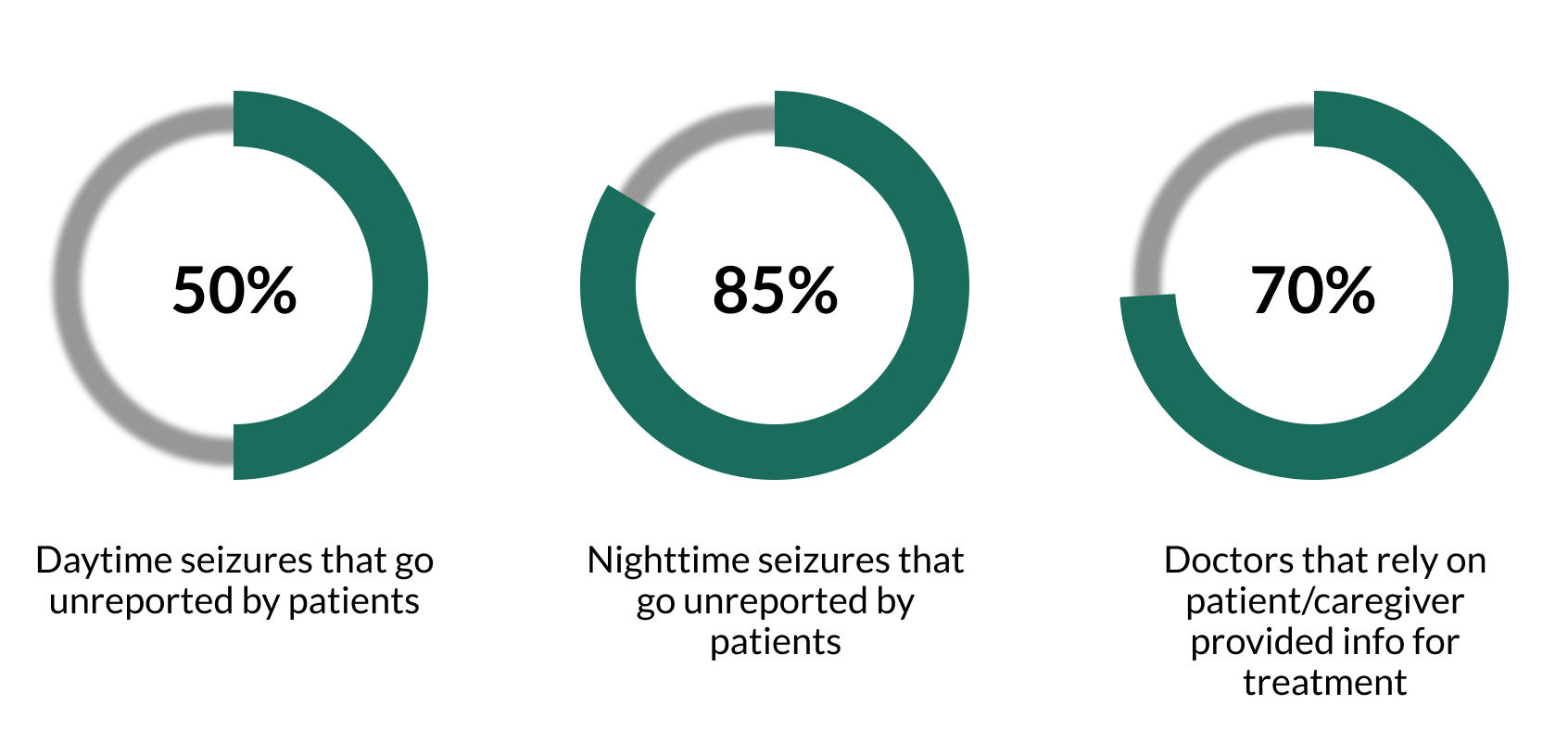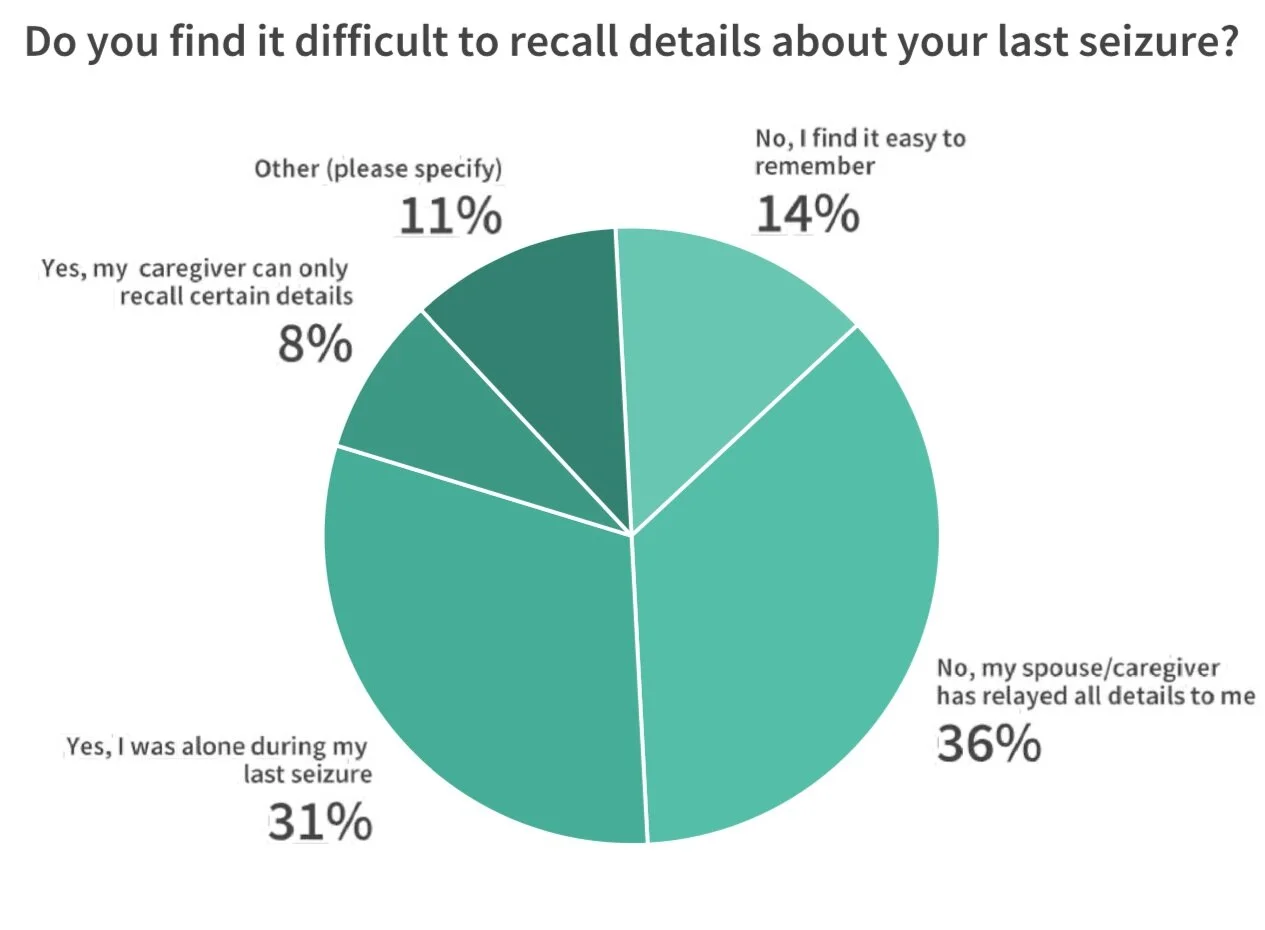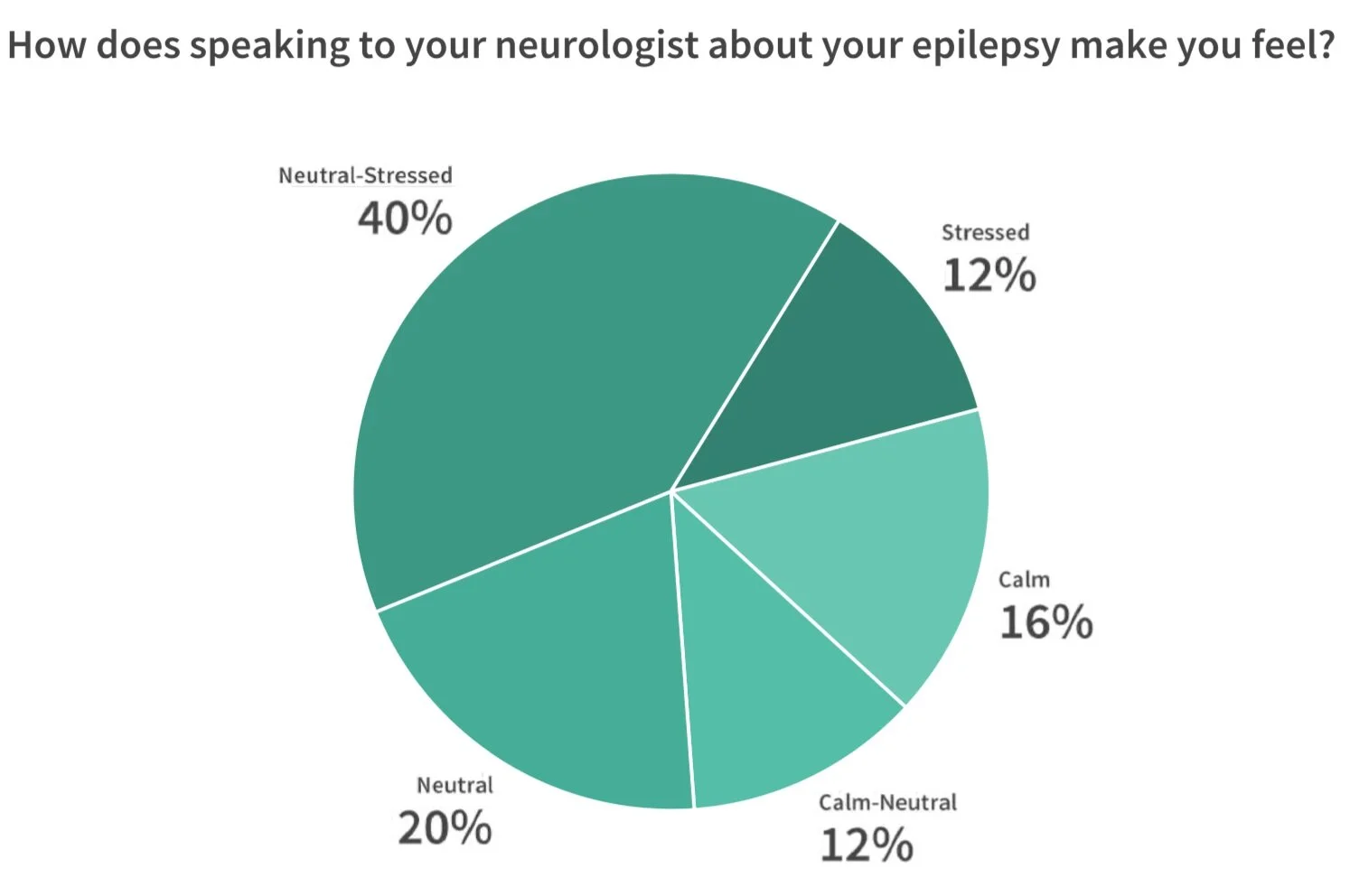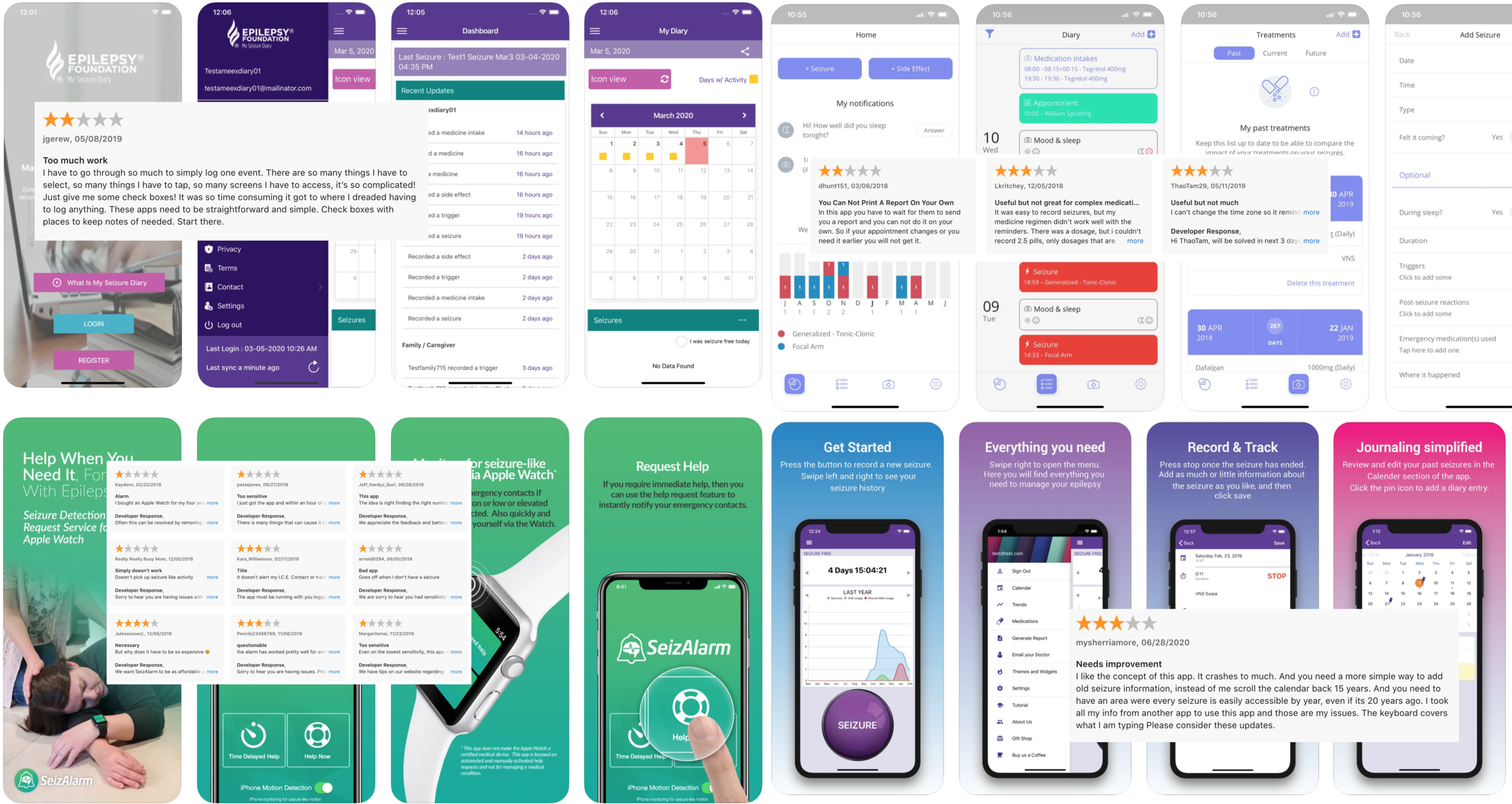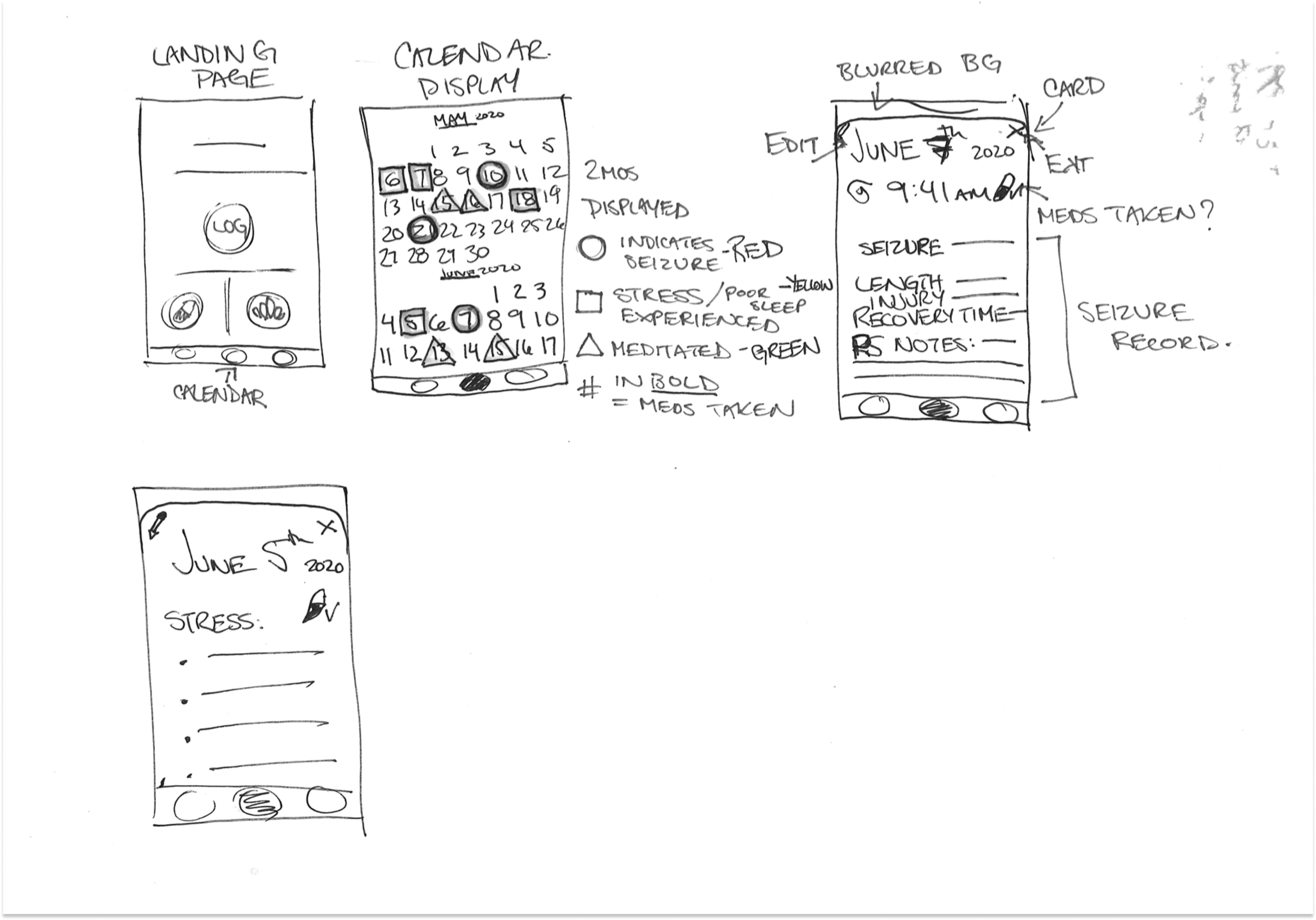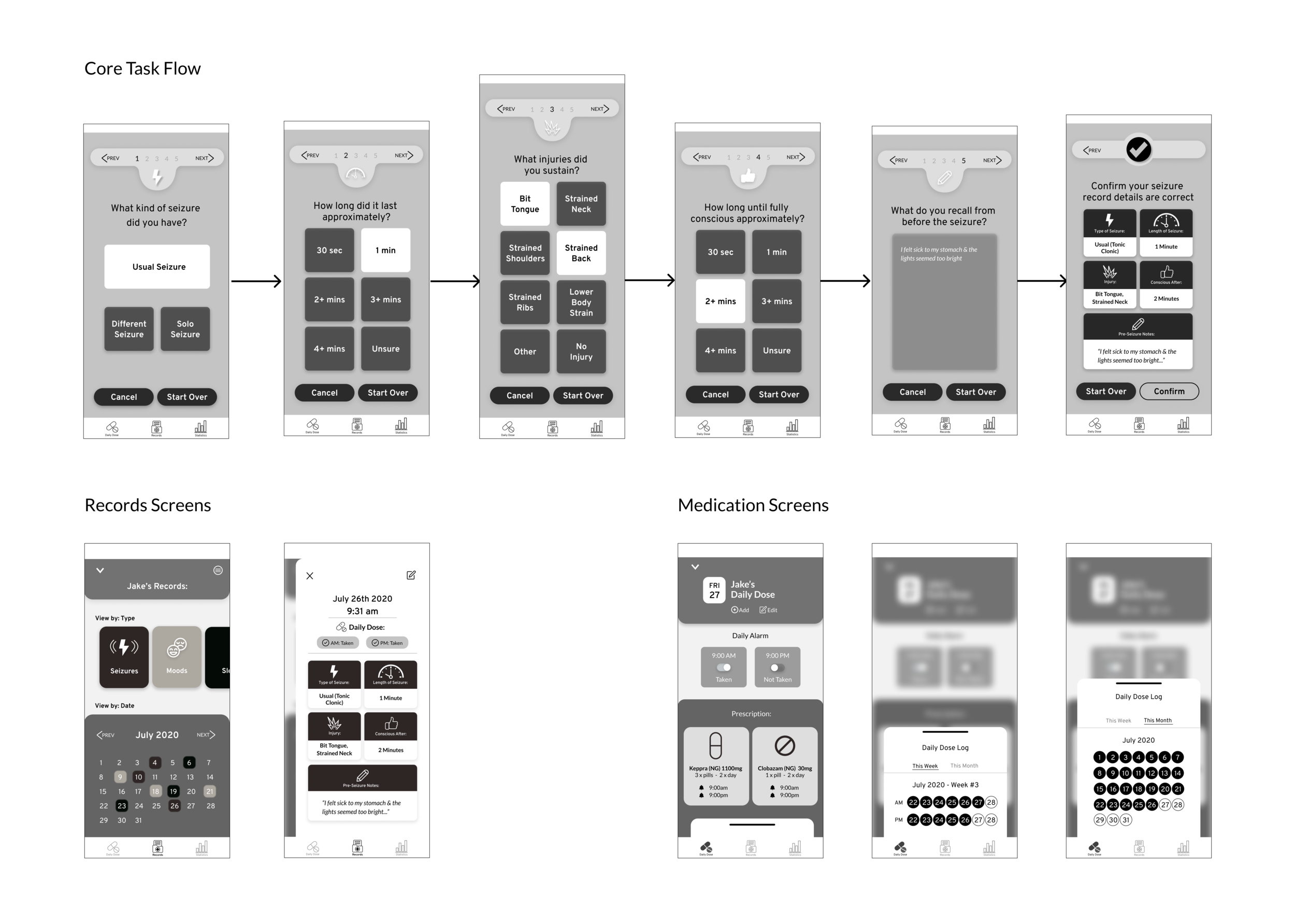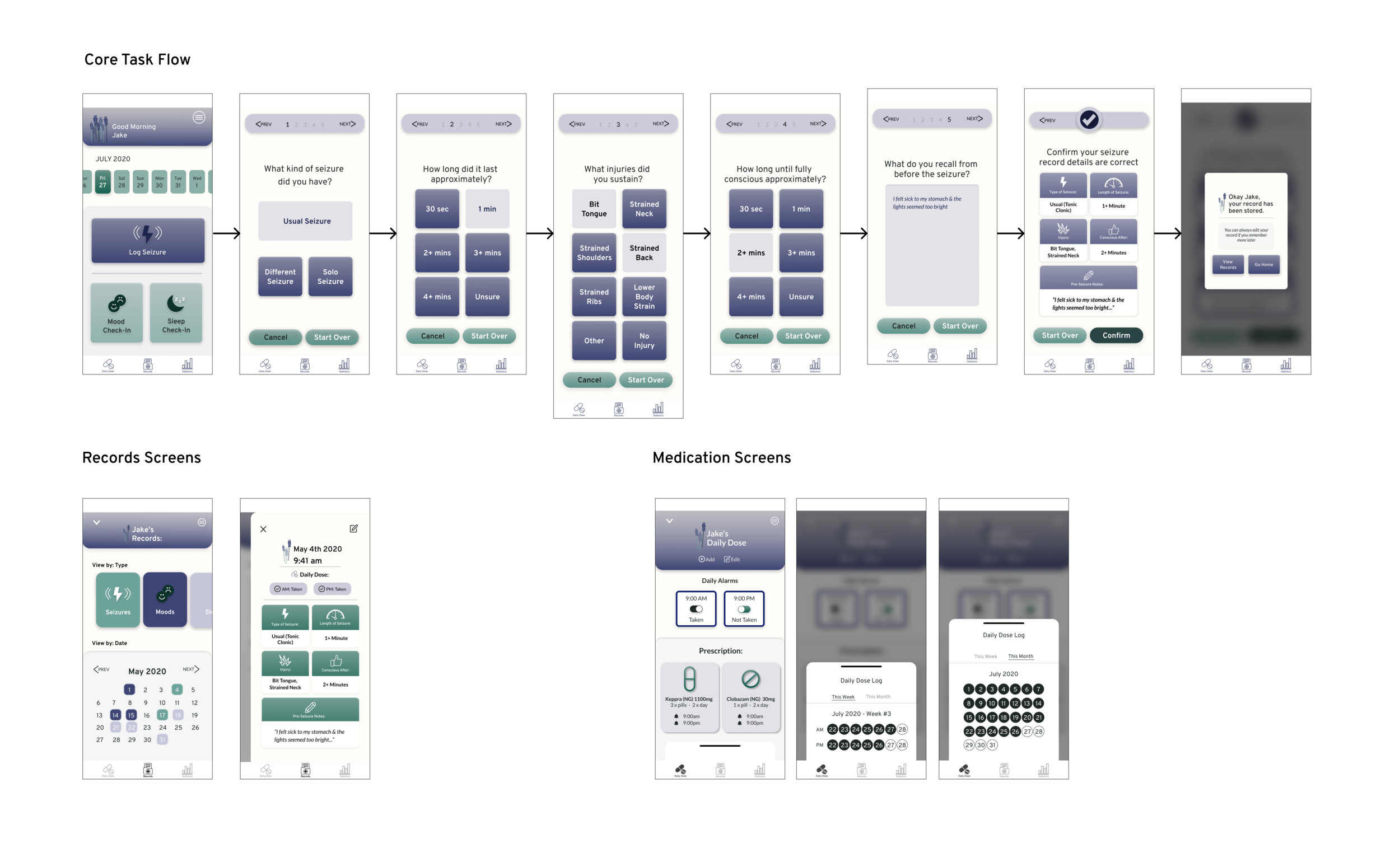
Case Study: EPILOG
EPILOG is a digital product designed to store information surrounding epileptic seizure activity so that it may be accurately conveyed to the overseeing physician. Pre-labelled buttons are provided for the user to reduce cognitive load during data entry, medication alarm and accompanying log tell both patient and doctor that treatment is consistent, stressful events and meditations are also logged to assist the physician in understanding the patient’s full condition.
Timeline: 10 Weeks
Role: Researcher & UX/UI Designer
Tools: Marvel, Figma & InVisionapp
Project Type: Educational
Table of Contents
Click on a subject of interest below or scroll the entire case study.

Problem Space
Design Challenge
The design challenge I wanted to present myself with was how a digital product could bring a positive impact on the lives of people suffering from a chronic illness or disease. Given some personal life experience with this particular subject, I felt there were ways of making certain essential tasks that were a part of these people’s daily, weekly, or monthly lives easier. I decided to focus on people suffering from epilepsy as it is a disease that both my friends and family members suffer from and I had limited knowledge of.
Global statistic epilepsy.ca
Introducing the problem.
Epilepsy.
Epilepsy is a neurological condition that affects the nervous system and is also known as a seizure disorder. It is usually diagnosed after a person has had at least two or more seizures that were not caused by some other known medical condition.
Seizures.
Seizures that are seen in epilepsy are caused by disturbances in the electrical activity of the brain. Epileptic seizures may be related to a brain injury, genetics, immune, brain structure, or metabolic cause, but most of the time the cause is truly unknown.
Action.
Aside from helping the person to a safe place and speaking to them calmly the most help, anyone can be is to watch. It is very important to observe and track seizures to assist the neurologist in choosing the right treatment plan. Furthermore, it helps in determining the medication effectiveness.

Research
Diving Deep.
I wanted to gain a full understanding of both the needs of the user but also who they are delivering the information to; the neurologist. Understanding that it may be easier to gain access to potential users over neurologists I delved deep into academic studies to find statistics that related to my problem space. In addition to this, I wanted to gain further insight into the daily lives of people with epilepsy through an anonymous survey.
Seizure reporting technologies for epilepsy treatment:
A review of clinical information needs and supporting technologies
This report had the most compelling statistics in support of my problem space. It was a three-month study, involving 27 neurologists and well over 100 patients that took place in November of 2015. The core reasoning behind conducting the research was for the development of technologies to support epilepsy treatment;
in which they specifically addressed the gap between the information needs of neurologists during clinical treatment and the performance statistics of the treatment itself. In conducting their research they determined they were not getting a full picture of the patient’s condition as key information was not available.
Statistics pulled from article. J. Bidwell - sciencedirect.com
Survey Monkey: Epilepsy & Your Daily Life
In the research process, I put together a short quiz to gain quantitative data and insight into the daily lives of epileptics. The quiz was posted on ‘PALZ’ a Toronto focused Facebook group dedicated to providing support and advice, and the epilepsy subreddit on Reddit. Over a 9 day period, I received 26 responses. General questions surrounded the length of time the person had epilepsy, whether they had a dedicated neurologist and whether
or not they were currently on any medication. More specific questions inquired as to the date of the last seizure and whether or not the neurologist was notified. The most relevant data in terms of the problem space came from the data collected around the emotional state of the person when speaking to their neurologist and their ability to recall key information surrounding their seizure activity when questioned.
Emotions
When taking into consideration the information a neurologist would want to know during an appointment I considered what experience that may create for the patient, particularly if they are unable to recall details. The pie chart here displays that over half of respondents experienced moderate to severe stress when speaking to their neurologist about their condition.
Memory
Being able to recall general details or at the very least keep track of what you do know of your activity was another challenge for respondents. The pie chart here displays that over half of the respondents could not recall general info about their seizure activity (date, time, or length of seizure) or required another person to relay the details they could recall.
Details
The previous issue continued when survey respondents also claimed difficulty recalling or possessing any information about the last seizure they had. The pie chart here displays that almost 70% of respondents could not recall any details around their last seizure or rely entirely on someone else’s account for information.

What’s out there.
In order to understand where my product could be of use for people with epilepsy I needed to take note of what already existed in the market. Seeing the possibilities for a design intervention in what others have overlooked as important for the target demographic.
Market Research.
There are many apps already on the market that are designed to assist people with epilepsy or those who are their caregivers. In the images below you see four examples of what is out there and reviews that helped to see where a design intervention
could be made. What I gleaned from this research was that the interface needed to be as simple as possible in documenting the seizure event and the later retrieval of that information for the purpose of later sharing with the neurologist.

How might we make the tracking and reporting of seizure activity easier for those living with epilepsy?
Interviewing People with Epilepsy.
During the research phase of this project target demographic interviews were also performed. Over a 2 day period, 4 adults with epilepsy between the ages of 36-44 were interviewed. Wanting to gain insight into the daily lives of those with epilepsy and where opportunities for improvement could be made in the tasks they must perform. The core questions I wanted to be answered related to the date of their last seizure,
how much they could remember about the event, how they kept track of their seizures they experienced and whether or not they got in contact with a doctor or neurologist following every seizure event. While the types of epilepsy and experiences with the disease varied greatly between interviewees; six common themes and insights emerged that helped to inform the design of the end -product.
Themes and Insights.
No Method.
Living with epilepsy means that you have seizures frequently or sporadically, this was illustrated in people interviewed. Despite this variance 0 /5 people interviewed had any clear method of tracking the time, date, length and severity of their seizure.
Aura Awareness.
It is common for people with epilepsy to have an aura prior to having a seizure, it is like the body’s warning signal. The type and length of aura is important information for the doctor when it comes to effective treatment and all respondents claimed mild to severe experiences, however they did not take note of it.
Rely On Relay.
Following every seizure a person with epilepsy should generally get in touch with their doctor and let them know. When (and if) doing so respondents relied on the information provided to them by those who witnessed the event and what they could recall.
Stressors.
Having a chronic disease like epilepsy can be stressful in and of itself, however stress can also be the potential cause of a seizure. Keeping daily stress levels in check and looking for ways to simplify their everyday life was a common theme throughout all of my interviews.
Solo Seizure.
It was common amongst all 5 people interviewed to suffer a seizure while alone and unable to gather much information surrounding the event. In these cases all respondents failed to immediately report this likely seizure to their doctor or neurologist.
Need Sleep.
When interviewees thought back to their last seizure during my interview they all mentioned that they believed a lack of sleep played a role. A lack of sleep or moments of interrupted sleep is also a known cause of seizures and all respondents claimed it had been an ongoing issue and a suspected seizure cause.
Understanding Jake
After synthesizing all of the data I had collected through my primary and secondary research I constructed a persona that fit with the target demographic I was designing for.
Journey Map.
Translating what I learned in the interview and subsequent persona building process I then began to fully empathize with my target user when I imagined them going to an appointment with their neurologist and how much easier it could be.
Opportunity Selection
GOAL
To increase the number of seizures reported to neurologists by their patients through easy seizure detail capture and store.
OBJECTIVE
To create a digital product that will allow users to log seizure activity in a variety of simple ways so that they may convey all of the accurate details to their neurologist with confidence.
TASK FLOW SELECTION
The core task I wanted to focus on was the logging of a seizure after it had taken place so that those details could be accurately passed along to their neurologist. Many of my test participants relied on someone else to relay details to them so this seemed the clear flow to begin with. I also chose this as the core task flow as I wanted to fully illustrate how easy the detailed entry could be.
Reflection & Next Steps.
Epilepsy is a vast and complicated subject. It affects a substantial percentage of the global population. The types of seizures suffered vary from a brief absence to a full body jerking and unconsciousness. Despite the varied nature of each person’s experience I was convinced that there was a way to alleviate the stress felt by these individuals as a group.
It was challenging interviewing people about a medical condition that involves a sudden stressful event. In the beginning, I found the mood of my participants to be light-hearted and their answers were long and detailed. However, as time went on they seemed to become tired as reliving the events brought back the residual stressful emotions. By the end, they were often eager to be finished with the interview.
Moving forward I wanted to apply all that I had learned in the extensive research process into the overall design by providing a simple and uncomplicated method for users to enter important seizure information and organize it in a way that it can be retrieved easily when prompted for information by their doctor or neurologist.

Ideation
Pen & Paper.
I began sketching out what the core task flow screens could look like in a basic sense and what the structure of the flow would be. I wanted the screens to use large simple buttons so that the person who has just suffered a seizure has to think less about how they are inputting the information, rather it is already there in a pre-labelled form. Through the research I had conducted I had determined the information the user would need to input and could label buttons with seizure lengths, typical injuries, and recovery times.
Initial Sketches
Initial Sketches

Medium Fidelity.
After some inspiration finding I then moved into Figma to begin building the medium-fidelity screens of the main task flow illustrated in the sketches.
UI Inspiration Board
Rounded corners and layered elements were my main UI inspiration in my design.
Core Task Flow
The primary design I focused when working in grey scale was the core task flow of logging a seizure event.

Visual Identity
Inspiration Gathering.
During the preliminary research process for this project, I had to delve deep into the world of epilepsy. Outside of technical information about seizure types and symptoms I learned of the supportive community network that exists for people with the disease.
Similar to other support networks for people with medical issues; epilepsy has globally branded itself with colour and flower. The colour purple and the lavender flower were chosen. Lavender represents loneliness and isolation which are feelings commonly felt by those who suffer from epilepsy. Additionally, the calming scent of lavender is often used by epileptics to help relax their distressed minds and bodies.
As I began to seek out inspiration I had certain keywords in mind that I wanted the product to emulate: calm, simple but not boring, stable, and reliable.
Mood board with colour palette pulled from images.
Typography Choices
After some research and inspiration finding I decided on the combination of Overpass and Lato as the typography for my project. The solid sans serif in both the title and body font gave the screens the easy readability they needed to perform well.
Epilogue.
or epi-i-log [ep-uh-lawg]
noun
a concluding section that rounds out the design of a literary work
a speech often in verse addressed to the audience by an actor at the end of a play
the concluding section of a musical composition
When I first conceived of the core reason for the app the brand name EPILOG came to me quickly. It was a simple descriptive term that clearly stated the app’s purpose. However, during my visual research, I came across several fading sunset skies that evoked the calm feeling I was after and a new thought around EPILOG emerged.
It struck me that a sunset is the end of the day, it’s the day’s natural epilogue. This literary term served as an excellent double entendre as this is the core purpose of the application, to serve as the epilogue to the seizure event. It was this realization that allowed me to see EpiLog no longer as a place holder of sorts and as a more powerful and truly correct brand identity.
Sketches exploring possible logos and wordmarks
Playing with different fonts while designing the word mark

Logo & Application Icon.
After translating the initial ideas of letter spacing play and sunsets onto paper I combined several ideas from the sketches. Continuing to adjust the design several fonts were explored until the choice to use Gurmukhi MN was decided on.
Then by adjusting the kerning between each letter I was able to visually establish the idea of spread apart bits of information that are drawing together towards the end. This visual cue directly correlated with the purpose of the product. By converting the text to an outline allowed the O and G to be connected more fully. Finally, as a nod to the sunset inspiration, a gradient was then employed as a final iteration and nod to the original inspiration.
Word mark and logo design
Application icon design rendered in several sizes

Final Design
High Fidelity.
Shifting into high fidelity I refined minor aspects of the design by removing the icons from the pagination during the core task flow to reduce visual clutter during this crucial time. I then applied the colour palette and tone to the UI elements.

Future Thinking
Design Impact.
When I consider the possibility of EPILOG coming to life and functioning fully as I have it specked out in the designs the impact would be beneficial to people with epilepsy who are looking to get on the right path with their neurological health. In tandem with this, a community of neurologists would be able to do their job more effectively with all of the information they need available to them.
Tarot Cards of Tech.
Looking for inspiration for the bigger questions to pose with EPILOG in mind
I chose the following two Tarot Card of Tech.
Grow.
The greatest potential a smash hit level of success could bring the product is the ability to add a community feature to the app. This community could have local meet-ups, provide support and resources no matter where you are in the world. Along with this additional functionality, I suspect the general awareness around the disease would grow worldwide.
Serve.
In a way, the product is designed to build a more limited and at times underserved community. However, beyond that there are the family members of people with epilepsy who would benefit as well. The reduced stress and obligation to assist in seizure tracking would be beneficial to their overall quality of life.
